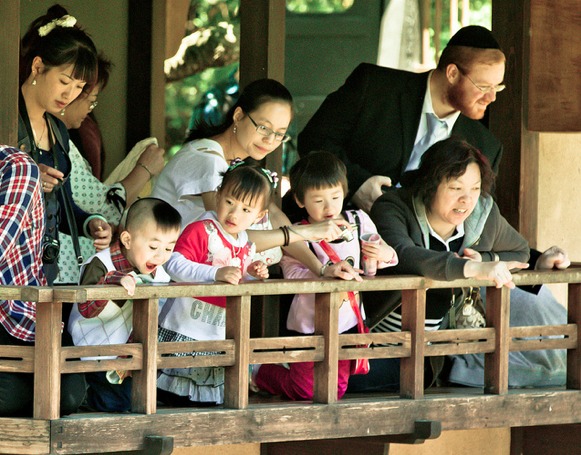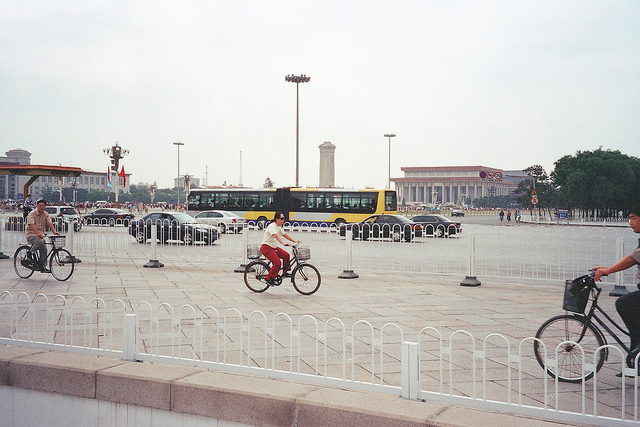Last year’s decision to relax the one-child policy was an important political step by the Chinese government but it will have little impact on the country’s demographic and economic trends. Chinese leaders have effectively ended “one of the most draconian examples of government social engineering ever seen.”
Historical Background
Rapid population growth after World War II led to a global focus on birth control. One extreme response was India’s forced sterilization campaign between 1975 and 1976 when more than 8 million sterilizations were performed. In 1980, China began enforcing its “one-child policy,” which three prominent Chinese demographers, writing recently in a U.S. academic journal, called “the most extreme example of state intervention in human reproduction in the modern era. . .that has forcefully altered family and kinship for many Chinese.”
Last Year’s Policy Change
Last November, China’s Communist Party announced that the one-child policy would be relaxed by implementation of a policy in which families are permitted to have two children if either a husband or a wife is an only child. This marks a change from the previous rules which required both the husband and wife to be only children in order to qualify to have a second child.
Because this relaxation was accompanied by a decision to dismantle the one-child enforcement bureaucracy, in my view it spells the rapid end of the one-child policy.
The most significant aspect of this move is political, as it represents the Party’s decision to withdraw from its citizens’ bedrooms. Restoring this element of personal freedom should help rebuild people’s trust in the Party.
But, contrary to conventional wisdom, ending the one-child policy is unlikely to change the longer-term trend toward a lower fertility rate. China’s current fertility rate of about 1.5 could drop even lower in the future, closer to South Korea’s 1.3, as the pressures of modern life lead Chinese couples to have smaller families.
Smaller Families Before One-Child
It is important to recognize that the steepest fall in China’s total fertility rate (the average number of live births per woman) actually came before enforcement of the one-child policy began in 1980. The fertility rate dropped by more than half, from 5.5 to 2.7, between 1970 and 1980, influenced by rising urbanization and falling infant mortality rates. Today, China’s fertility rate is about 1.5.
Although 11 million couples are now eligible to apply for permission to have a second child under the new policy, only 700,000 couples (6% of total) applied through August of this year.
Long-Term Impact
Last year, before the policy change was announced, I spoke with one of China’s leading demographers, Wang Feng, about the prospects for change. Wang is a professor of sociology at the University of California, Irvine, and is on the faculty of Fudan University in Shanghai. He is also a nonresident senior fellow at the Brookings-Tsinghua Center in Beijing, and he recently wrote that the one-child policy “will go down in history as a textbook example of bad science combined with bad politics.”
Following are excerpts from my interview with him. I began by asking him about the long-term impact of ending the one-child policy. Professor Wang said expectations for a rebound in the fertility rate have been exaggerated:
Professor Wang: The reason I say it’s exaggerated is because in most of China’s rural areas, couples who want to have two children have already had two. There are certainly some couples who would want to have two children, which would be good for them, but we have all indications showing that many urban couples are happy to stay with one. And then there are couples who are actually choosing not to have any children, given the larger financial ramifications—the cost of having them.
For instance, in Shanghai, fertility is even below the one-child-per-couple level. This is despite the fact that, because of the early implementation of the one-child policy, many Shanghai couples are in the only-child cohort and are thus eligible, under the current rules to have a second; but they are often choosing not to have a second and many are not even having one.
Click the following link to read the interview with Professor Wang Feng.
The views and information discussed represent opinion and an assessment of market conditions at a specific point in time that are subject to change. It should not be relied upon as a recommendation to buy and sell particular securities or markets in general. The subject matter contained herein has been derived from several sources believed to be reliable and accurate at the time of compilation. Matthews International Capital Management, LLC does not accept any liability for losses either direct or consequential caused by the use of this information. Investing in international and emerging markets may involve additional risks, such as social and political instability, market illiquidity, exchange-rate fluctuations, a high level of volatility and limited regulation. In addition, single-country funds may be subject to a higher degree of market risk than diversified funds because of concentration in a specific geographic location. Investing in small- and mid-size companies is more risky than investing in large companies, as they may be more volatile and less liquid than large companies. This document has not been reviewed or approved by any regulatory body.



 For Fórmate a Fondo
For Fórmate a Fondo